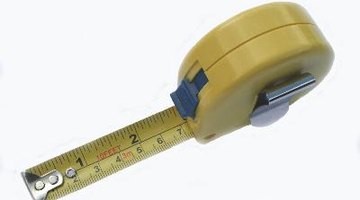How to Install Beadboard in the Basement
Installing beadboard in a basement is much easier than installing Sheetrock, and much more attractive than traditional dark paneling. When starting from concrete or cinder block walls, a few preparations are necessary before you can begin.

Things You Will Need
- Measuring tape
- Chalk line
- 1 inch by 3 inch furring strips
- Three inch masonry nails
- Claw hammer
- One inch rigid foam insulation
- Utility knife.
- Six millimeter polyethylene vapor barrier
- Duct tape
- Staple gun
- Circular saw
- One-inch brads
Installing beadboard in a basement is much easier than installing Sheetrock, and much more attractive than traditional dark paneling. When starting from concrete or cinder block walls, a few preparations are necessary before you can begin. Installing beadboard in a basement goes relatively quickly and you can complete the project in a weekend or two.
Wall Preparation
-
Measure and buy furring strips. Furring strips are the pieces of wood in between which you place the insulation and attach the bead board. You need one furring strip for every 16 inches and enough to cover the bottom and top perimeter of the wall.
-
Measure furring strip placement. Starting at a corner, measure 16 inches out from the corner and snap a vertical chalk line. Continue snapping a vertical chalk line on the wall every 16 inches around the entire room.
-
Install horizontal furring strips. These strips run along the top and bottom of the walls in the room. Attach with a claw hammer using one masonry nail every 12 to 16 inches.
-
Attach vertical furring strips with masonry nails. Using a claw hammer, pound in one masonry nail every 16 inches on the vertical furring strips.
-
Cut the rigid foam insulation to fit. Cut the insulation to fit in between the 16-inch spaces of the vertical furring strips. You also need to cut the insulation to fit the height of the walls.
-
Insert rigid foam insulation. Place the rigid foam insulation between the vertical furring strips. You do not have to attach the insulation to the walls, simply allow it to sit in the space between the furring strips.
-
Install a vapor barrier. The vapor barrier blocks water vapor from seeping though the basement walls preventing mold and mildew growth and damage to the beadboard. Using a staple gun, tack the vapor barrier onto the furring strips, overlapping the edges by six inches. Cut off excess with a utility knife. Seal the edges with duct tape.
Installing Beadboard
-
Measure for the first piece of beadboard. Beginning in a corner, measure from floor to ceiling. Then take 1/8 of an inch off the measurement to account for a necessary expansion gap that allows the beadboard to shrink and swell with changing temperatures.
-
Cut the first piece of beadboard. Make this cut with a circular saw according to your measurement in Step 1. Attach the beadboard to the furring strips. Place the beadboard with the tongue side facing out and pound in one 1-inch brad nail every 12 inches.
-
Attach the beadboard to the furring strips. Place the beadboard with the tongue side facing out and pound in one 1-inch brad nail every 12 inches.
-
Measure for the second piece of beadboard. You have to do a measurement for each piece of beadboard due to fluctuations in the height of the floor and the ceiling. Again, subtract 1/8 of an inch from your measurement for the expansion gap.
-
Cut and install the second piece of beadboard. After you cut the piece to fit, slide the groove of the next piece of beadboard into the tongue of the first piece of beadboard attached to the wall. Repeat Step 1 through Step 4 until the entire room is complete.
Tip
If you are worried about how the furring strips will hold, use a bead of construction adhesive on the back of the strip before nailing it in.
Warning
Never install beadboard where there is moisture. Moisture seeping through the walls leads to serious mold and mildew issues. It will also ruin the beadboard paneling.
References
Tips
- If you are worried about how the furring strips will hold, use a bead of construction adhesive on the back of the strip before nailing it in.
Warnings
- Never install beadboard where there is moisture. Moisture seeping through the walls leads to serious mold and mildew issues. It will also ruin the beadboard paneling.
Writer Bio
Sue-Lynn Carty has over five years experience as both a freelance writer and editor, and her work has appeared on the websites Work.com and LoveToKnow. Carty holds a Bachelor of Arts degree in business administration, with an emphasis on financial management, from Davenport University.
Photo Credits
- tape measure 1 image by Martin Grice from Fotolia.com
- tape measure 1 image by Martin Grice from Fotolia.com
More Articles



